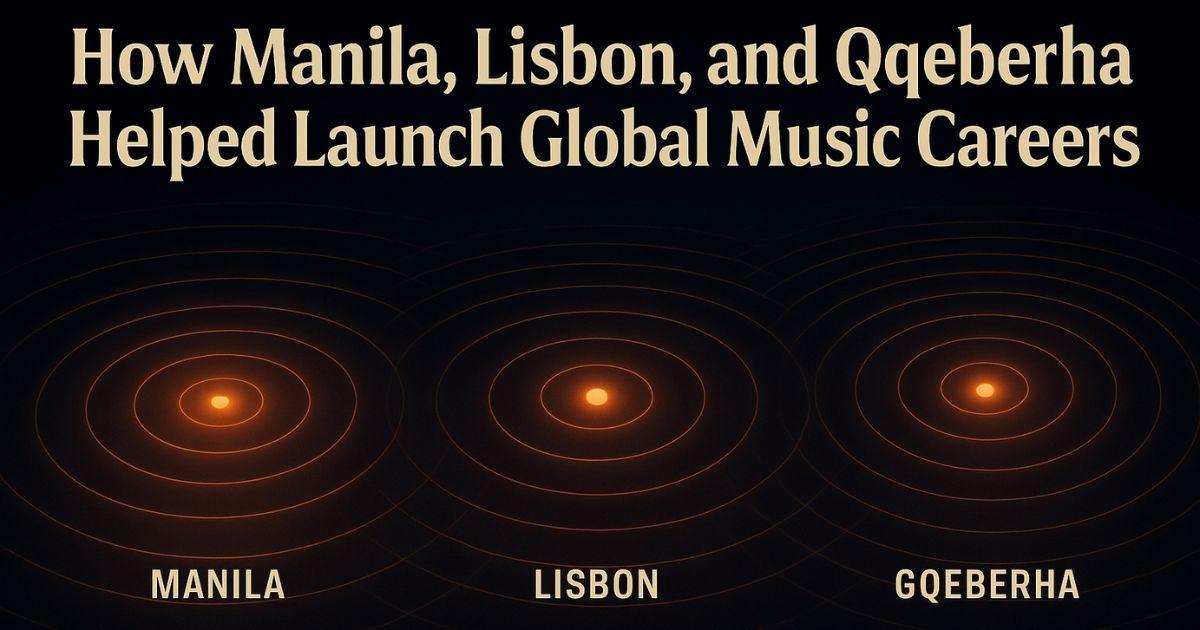Physical Address
5106 Whitman Way, Carlsbad, CA 92008
Physical Address
5106 Whitman Way, Carlsbad, CA 92008

In today’s streaming-first world, the idea of “breaking globally” doesn’t always begin in Los Angeles, London, or Berlin. Instead, it often starts in cities like Manila, Lima, or Jakarta — places where fandom spreads like wildfire, and algorithms follow behind.
These cities are known as Trigger Cities — urban streaming hubs identified by data platform Chartmetric as disproportionately influential in helping emerging artists go global. They’re not traditional industry centers. They’re ripple generators.
Let’s dive into three artists whose careers were shaped by these often-overlooked epicenters of music discovery.
Trigger City: Manila, Philippines
Breakout Song: “To the Bone”
Indonesian singer-songwriter Pamungkas didn’t follow a Western playbook. He didn’t have a global label deal, nor a TikTok campaign choreographed by a U.S. agency. Instead, he had a ballad. One that resonated so deeply with fans in Manila that it transformed his trajectory.
Released in 2021, “To the Bone” was a slow-burning anthem at home in Jakarta. But it caught fire on Filipino TikTok, soaring to No. 5 on Spotify Philippines and eventually racking up over 100 million streams. Local fans didn’t just stream the song—they memed it, covered it, and made it their own.
This momentum turned regional success into real-world impact: Pamungkas toured Southeast Asia, with a special stop in Manila, well before Western labels came knocking. The Philippines didn’t just adopt him—they exported him.
“It’s always the fans who know first,” Pamungkas said in a local interview. “Manila gave the song its second life.”
🔗 Sources
Trigger City: Manila, Philippines
Breakout Track: “Tequila” (Colors Live)
How does a Cape Verdean-Portuguese singer break into Southeast Asia while singing in Kriolu and Portuguese?
Answer: with a COLORS stage, a spellbinding voice, and a loyal fanbase in Manila.
In 2021, Nenny’s performance of “Tequila” on the COLORS YouTube channel went viral — but not in Lisbon. It first spread through the R&B underground in the Philippines, where language mattered far less than vibe. Filipino fans circulated her clip across social platforms, drawn to the emotion and rhythm.
The result? Millions of views. A spike in followers. And a Lusophone sound suddenly thriving halfway around the world.
“Southeast Asia shares music freely,” notes the 2024 Chartmetric Trigger Cities report. “Language barriers dissolve when the community connects.”
🔗 Watch: Nenny – Tequila (A COLORS SHOW)
Trigger Cities: Johannesburg → Lagos → Global
Breakout Song: “Fetch Your Life” (w/ Prince Kaybee)
South African singer-songwriter Msaki built a slow revolution — one poetic, electronic track at a time.
Born in Gqeberha (formerly Port Elizabeth), Msaki fused folk roots with house and electronica, crafting politically aware, emotionally grounded anthems. Her collaboration with producer Prince Kaybee, “Fetch Your Life”, exploded across African streaming platforms.
But it wasn’t just local. The song spread organically via Boomplay, YouTube, and pan-African TikTok, gaining fans in cities like Nairobi, Accra, and Lagos. These trigger cities amplified her reach, leading to festival invitations across continents — from Zanzibar’s Sauti za Busara to 1Beat NYC.
Msaki went on to collaborate with international stars, most notably Black Coffee on his Grammy-winning album Subconsciously.
Her secret? Letting the songs travel. “I don’t write for export,” she once told LAMag Africa. “I just let the music move through people.”
🔗 Sources
The stories of Pamungkas, Nenny, and Msaki aren’t just interesting case studies. They point to a new paradigm:
Artists who break through often do so because of unexpected enthusiasm in places far from the industry’s gaze. That’s the trigger city effect — and it’s shaping the future of music discovery.